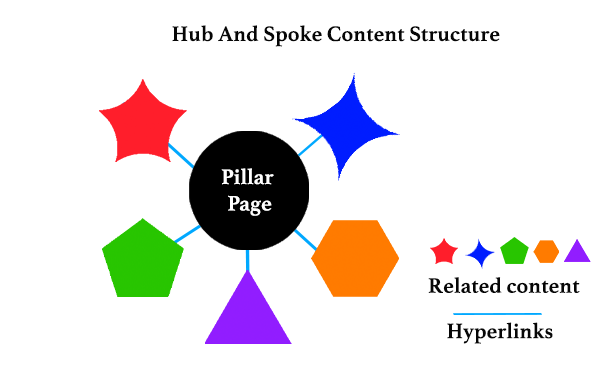
Managing your business is no easy task when you’re the only one doing all of the work. Most business owners don’t have the patience or the time to manage everything, let alone the SEO of their website. If you are one of the few brave souls who are undertaking this endeavour, here are a few of the most important concepts to apply so you can improve the search visibility of your site over time.
Build a solid foundation for your content
Search engines love websites that demonstrate expert opinion, authority and structured content. Plan your content with a site structure that provides the depth of your topic and illustrates the most important keyword ideas on your website.
The use of keyword clusters is an advantage that enhances the optimization of a keyword topic. This is exactly the type of content search engines prefer to display as solutions to a query.
List the main topics of your business. For every one of your main topics list the subtopics that would summarize the content of your main topic idea. What you’re doing is laying the groundwork for a topic cluster.
The subtopics should be enough to be standalone blog posts that go deep into detail on one particular subject. Write content on each of these subtopics before writing the pillar page (main keyword topic).
When you write the pillar page on your main keyword topic, do not go in to detail on your subtopics. You don’t want to write the same information twice. Be brief; summarize your points and link out to the detailed blog posts as an option for the reader to learn more about the subject.
Your pillar page will be the hub for all of your smaller focused articles. Try to aim for a long form, evergreen article. This topic cluster model will look like this:
Image Source
Group your search terms
Once you have your topic clusters you will need to find the best keywords that apply to your page. Enter your keyword idea into a tool such as keyword.io and generate a list of ideas to help identify phrases that match your content.
You can also use Google autosuggest by typing in your keyword and adding any relevant terms that appear in the drop down menu. The suggestions that appear are popularly search terms, which will help to satisfy search intent.
Consider the questions in the PAA box as potential headers, titles and subtitles. Optimizing your content to answer those questions allows you to compete for a position in the PAA box. If you can secure a position you can increase the traffic and click through rate to your website.
Take your research a little further and type in your keyword topic in Answer The Public. This site will provide lists of questions using your keyword and popular keyword combinations.
Your list should be quite extensive at this point. Group your keywords into clusters that represent the same user intent. It will help to use as many of the words and phrases on your list within your content to account for semantic analysis by search engines.
Improve your ranking with your on-page optimization
When a website can provide a large selection of options within a related topic they are more likely to be selected than a website that is missing segments of that topic. This is a huge reason your keyword research is so important.
However, if your pages are optimized for a specific term as well as your topic, you improve your chances to rank for that specific term. Use your keyword in your title, URL and in your image alt tags to get your basic on-page optimization started.
You can also place your keyword in the first few sentences of the first paragraph as well as in your meta description. The use of LSI keywords, synonyms and related phrases will also add contextual meaning and give your page stronger ranking signals for your keyword topic.
Improve your authority and credibility
One of the last phases of driving traffic to your pages is to build authority with some backlinks. The more links you can point to your page the stronger your authority grows and with it, your ability to rank.
This is probably one of the most difficult aspects of SEO for people who don’t have any experience in link building, which makes guest posting a top option. There are high authority sites in every niche that will publish articles from outside sources and provide a link back to your website in return.
The concept is simple, but the process is labour intensive and time consuming. Not every website will accept your article which means acquiring a few links will depend heavily on how many submissions you’re making a day.
Find a list of guest posting sites by typing in a search “sites that accept guest posts”. Always read the guidelines on each site, as they will have different requirements in order to get published. Most times it will take a few tries to get a site to agree to publish your article, so try to establish a realistic schedule that allows you to be consistent in writing and submitting.
Score high in the most important ranking categories
In most cases the content you publish and the backlinks you acquire are the two most important ranking factors that get websites on the first page. Nailing the fundamentals down solid will secure a firm foothold in your sites authority and ability to rank and drive traffic from the most relevant search terms.
Christian Carere is an SEO consultant and the founder of Digital Ducats Inc. Christian works primarily with SMB’s to improve the quality of traffic, increase leads and produce new clients on a regular basis.The post How to Publish SEO Friendly Content on Your Website appeared first on SiteProNews.
Source: Site Pro News
Link: How to Publish SEO Friendly Content on Your Website



Leave a Reply